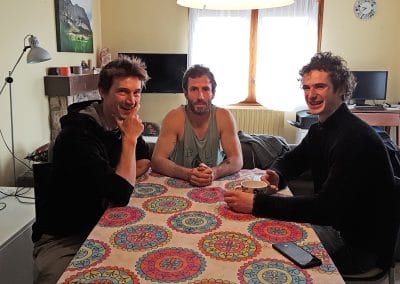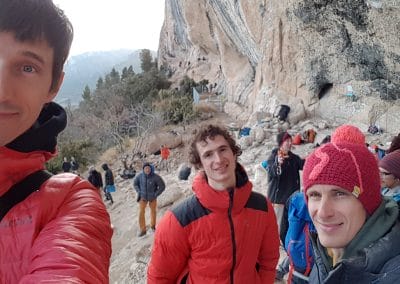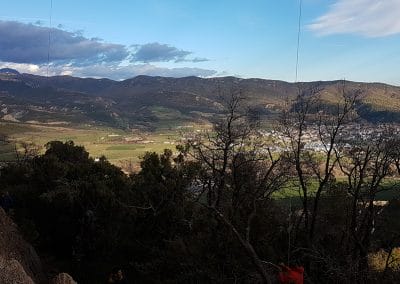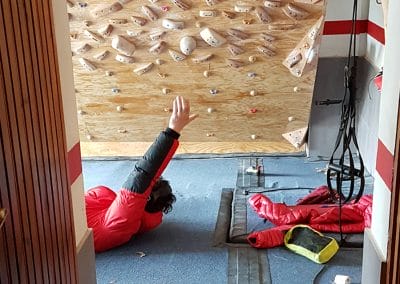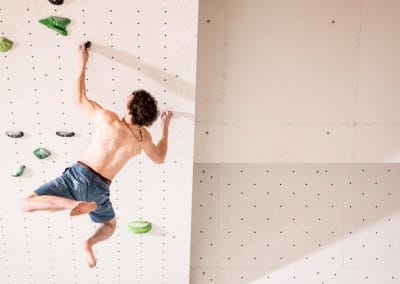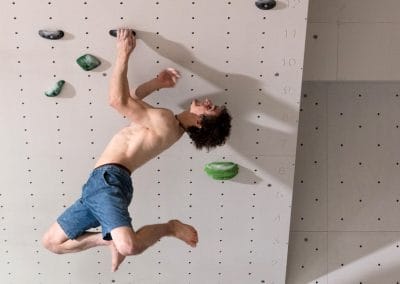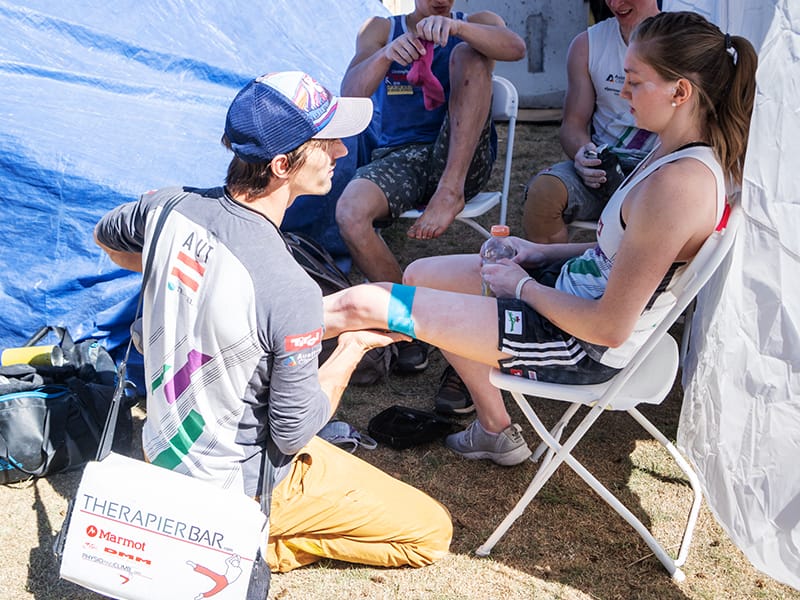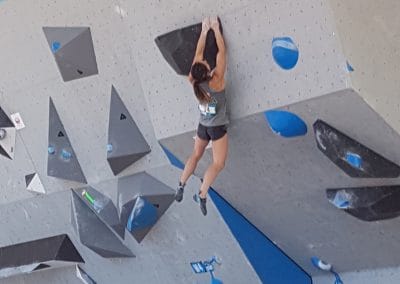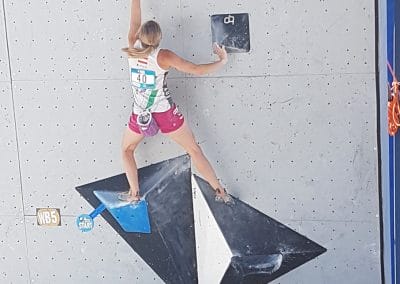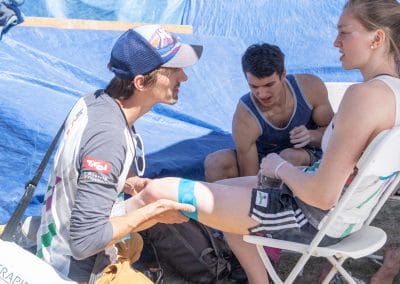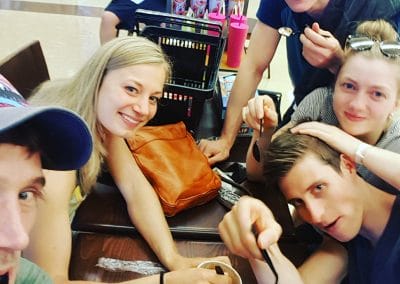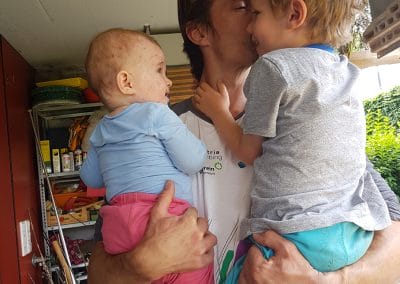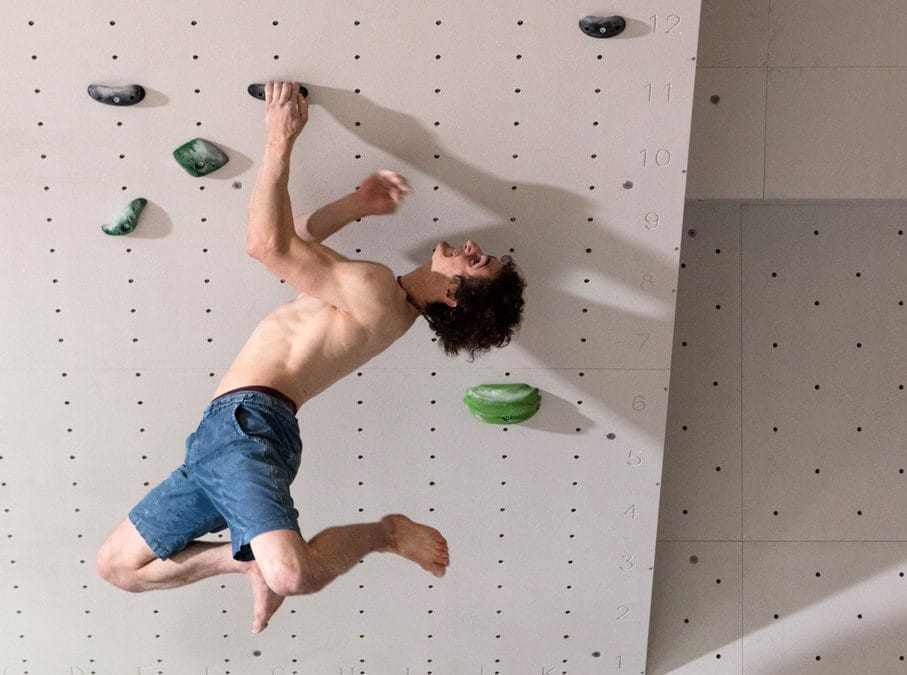
What happened to Adam?
Adam Ondra had a ground fall.
In February after flashing Supercrackinette 9a+ (5.15a), a few days later, Adam fell approximately 8 meters to the ground. Adam told me that he immediately knew what was going on and prepared himself for the landing. If you know Adam, you know that he is fast. Being fast means thinking fast. He landed on both of his feet, went into a squat position, touched the ground with his butt for a millisecond before he went into a standing position – like a tensioned spring.
Adam was not in pain. Not at that moment. Not after. Logically they went to the hospital. MRI and X-ray were fine which definitely is very unusual, but when it comes to Adam, well maybe possible…
When did I step in?
After my holidays I flew to Spain to help Adam with another 9a+ flash attempt in Oliana. At least that was the plan, until he told me. We both were super emotional about the incident and concluded that he is a super, super lucky bastard. While checking his body I noticed that there were several massively blocked areas which obviously resulted from the impact. But still it was extraordinary that he basically had “nothing”, so maybe I thought the landing was probably very soft, that there was rope drag and who knows… when you fall 4 meters it might feel like 8 meters, right?
What was missing?
Adam complained about a slight swelling on the knee. So I tested that as well, his medial meniscus jumped back on its position, a sign that it was locked before.
After the treatment and a conscientious check of his knee there was no indication for a not fully functioning knee. The swelling did not seem to be inside the joint. Did not seem… you see that was the problem. Make a long story short: It was not 100 percent clear. Because there was no question about the knee after the impact, there was no check up in the hospital done. But now it was.
The diagnose
Adam underwent an MRI scan. As you might now, MRI scans are always a point of discussion. That is why I think it does not do only good things to an athlete – but that is another story.
Result: massive bone bruise in the medial condyle, the lateral had one as well, the ACL was overstretched and the med. meniscus had a bad compression.
Rehab started
Luckily I have a team in my clinic, so I could save all available treatment appointments for Adam. After an intensive therapy time and care of some weeks packed with full commitment of both sides Adam got a control MRI. It was taken in half the standard healing time and still, the bone bruise was gone completely.
WOW! That was pleasant news! At this point I’d like to thank my team colleagues as well as Dr. Mark Wiedemscheck and his colleagues from the Landeskrankenhaus Feldkirch. They had never seen such a with blood well supplied spine in 20 years, as well as such a fast healing process.
And now tell me, what is key to treat a top athlete? The gold standard procedure or would you better get the individual norm of every patient?

